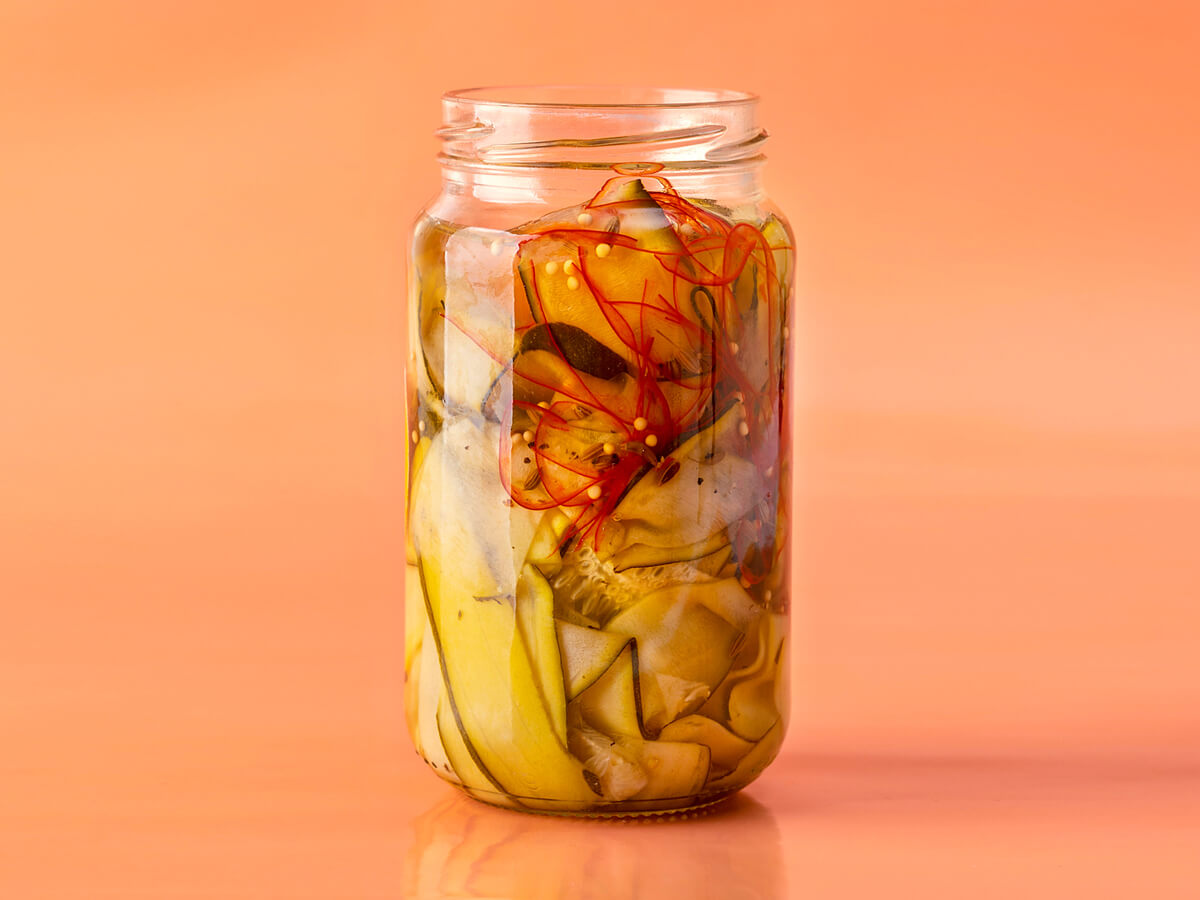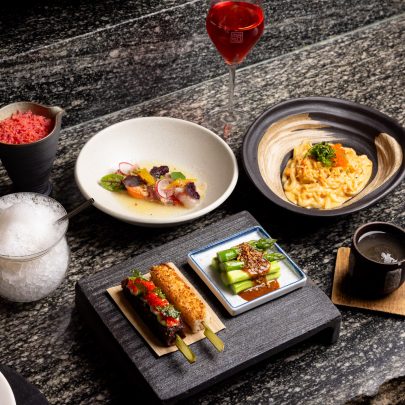Mar 2, 2020 Food
Pickling and fermentation are springboards to a world of culinary experimentation. And they’re easy! Skip down to Ed Verner and Plabita Florence’s recipes here.
I have some quick pickles in my fridge. They’re called acar: about four different types of vegetables tossed with tamarind and a spice paste, making them sour and crunchy and slightly sweet. They’re good to go pretty much straight after they’re made, hence “quick”. Also in the fridge, some homemade kimchi I use to flavour my fried rice. And on the windowsill, a glass jar lies in wait, topped to the brim with colourful cherry tomatoes in brine. I’ll eat them with pasta, eventually. What a convenient way of cooking.
For more great videos, check out our Youtube Channel.
Differentiating between pickling and fermentation can be hand-wavy, and even within the two broad terms there are various types and methods. All pickling is fermentation, but only some fermentation is pickling. Pickles are simply preserved in brine or acid. Fermentation is a transformation, wherein we try to inhibit bad bacteria and let the good bacteria thrive. “Rot’s a club where everyone gets in; fermentation is where the party is popping,” a wise man once said. (That’s Noma’s head of fermentation, David Zilber.) And it overlaps. Lacto-fermentation — using a brine of salt and water — is what produces kimchi and sauerkraut pickles, and is a common process of fermentation; the good bacteria (lactobacillus) convert naturally present sugars into the lactic acid that makes vegetables all sour and zingy.
This isn’t new — various cultures have used fermentation and pickling since the dawn of time, a pre-refrigeration way to prolong the life of food during lean periods. Lately, we’ve been hearing more about it, as fine-dining kitchens around the globe push at its boundaries in search of new flavours and sustainability becomes increasingly prominent in contemporary food culture.
Pickling and fermentation are fun. Every chef I speak to tells me that. They’re creative, experimental ways to cook and to flex your brain a little bit. Executive chef Joe O’Connell at Ozone Coffee Roasters — a company that’s really pushing itself on fermentation — explains that leading an all-day eatery, open seven days a week, can sometimes be a grind for a chef, their hands going through the same motions. “It’s really important there are areas we can explore, engage and have fun.”
And there’s something rewarding in the unknown. “I feel like it’s out of my control a lot of the time,” Plabita Florence says. Florence owns plant-based eatery Forest and has been vegetarian her whole life. “If something’s gonna become cool, I’m discovering it as it happens. I don’t really do it on purpose.” “Not on purpose” is Florence’s MO when it comes to this style of cooking, sticking to the philosophy of using what’s around, which, happily, makes fermentation a very sustainable way of cooking; here, as they often do, sustainability and creativity go hand in hand.
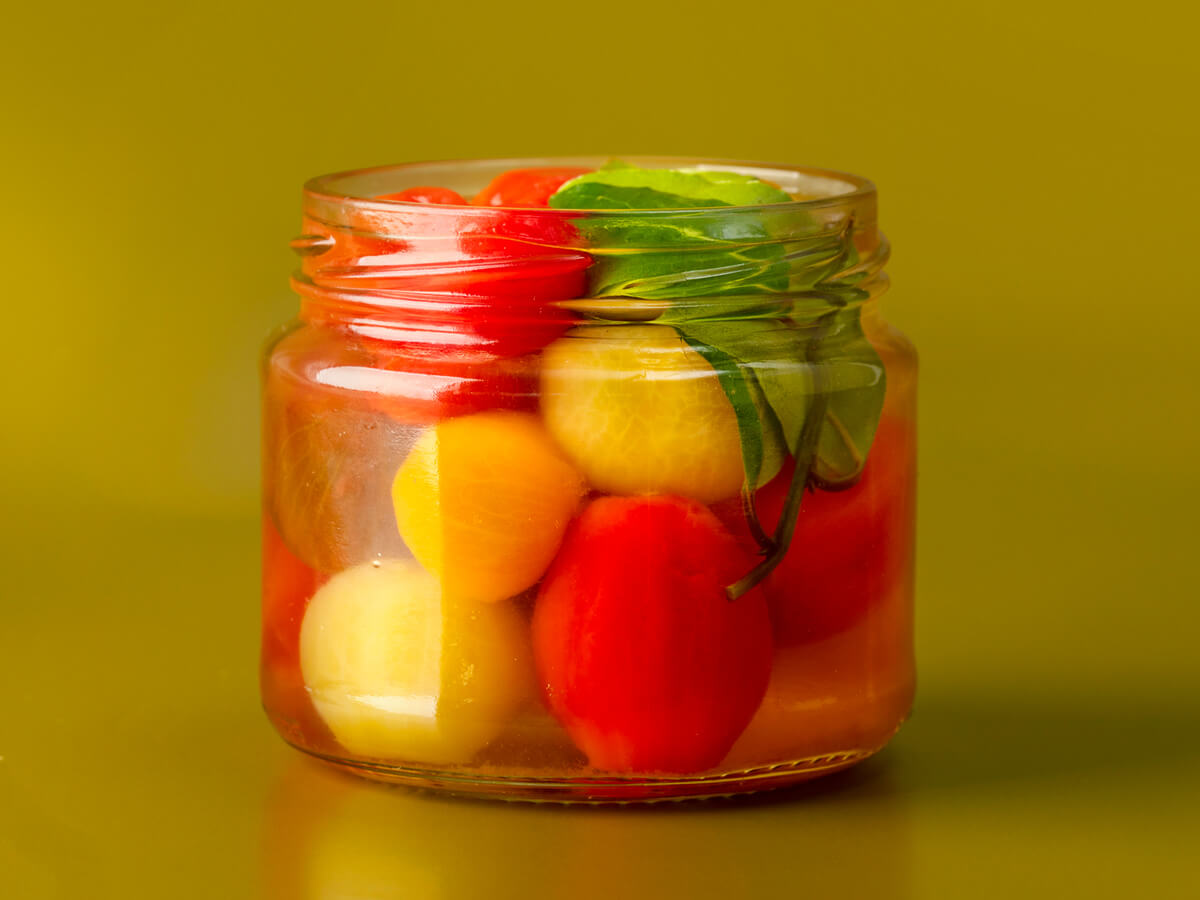
Florence serves a carrot cracker using pulp from her fermented carrot soda. “It’s not like, ‘I’ve got this wild idea.’ It’s like, ‘I’ve got this carrot pulp and I don’t want to put it in the bin because I had to pay for that weight.’ That’s when the best things come about, maybe because they have a bit more meaning to them.”
O’Connell looks at it as a reframing; how do we look at what are traditionally ‘waste’ products and think of them as something new? Instead of cabbage, he uses silverbeet stalks for Ozone’s kimchi — it yields a different, crunchier texture, but no less delicious. Pasture’s owner and chef, Ed Verner, will come up with artful dishes while already having uses for their waste by-products in mind. “I put this ridiculously wasteful dish on the menu knowing it’d be fine because I was going to use the other 90% for a fermented mushroom broth. Without fermentation, I wouldn’t be able to do that.” And now it’s summer, taking advantage of the abundance of produce feels like common sense. It makes sense in terms of sustainability, and also economics.
Interesting flavours are another obvious consideration with pickling and fermentation. “It brings so much umami and acidity and brightness, and an incredible range of flavours from one week to the next,” O’Connell says. During the day, Ozone plates up classic brunch food, but O’Connell sneaks in their funkier creations wherever he can — such as lacto-fermented blueberries, which ended up a little bit fizzy, on bircher muesli.
Florence likes serving things that are “a little bit weird”. It makes life more interesting, and feels like you’re doing something special. The potential for unique flavours, which other restaurants can’t just go to the supermarket and procure, is a tempting drawcard, too.
You can add a whole variety of spices to your pickle or ferment at the beginning of the process. Unless you’re following a recipe, it can be a trial-and-error kind of deal. And when it doesn’t work? “Oh, heartbreaking,” O’Connell says. “An adjustment of 1% salt can turn it from an inedible tough mess into the most amazing thing you’ve ever fucking eaten.”
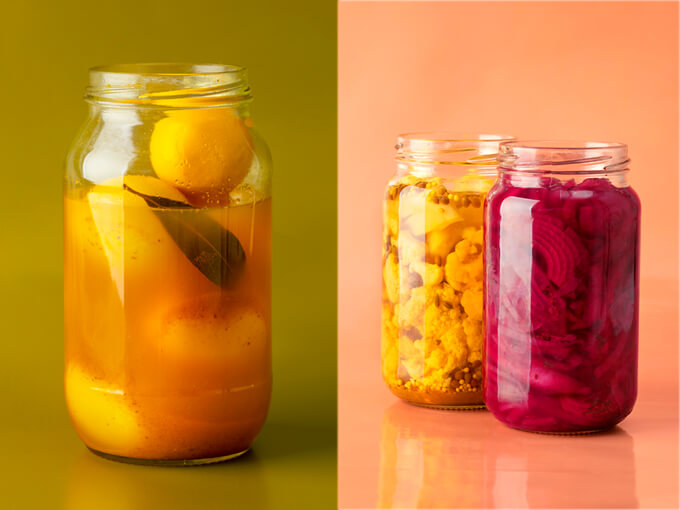
“I’ve made so many dumb things,” Florence tells me. “Like last winter, I went to the park and collected up all these green grapefruit, because they were falling off the tree and rotting everywhere. I spent hours preserving them, and shredded up the rind to make savoury marmalade. Everything I made was pretty bad.”
Verner’s experimentation days are largely over (although not completely, judging by how many jars are on the Pasture shelves). He now has his go-to favourites, and keeps the ferments clean and pure, layering on spices and flavours later. That allows for more flexibility.
Due to the endless nature of fermenting — you could probably pickle any type of vegetable — it’s easy to get carried away. “I haven’t found something I haven’t liked yet,” O’Connell says. Your best bet is to use quality non-iodised salt, clean water (he uses mineral water, as city water is unpredictable) and follow a good, classic base recipe before going too crazy with adding herbs and spices.
How do you know your pickle or ferment has gone bad? You can probably tell straight away. You’ll open the lid and see (non-white) mould, or it’s slimy and tacky, mushy or stinky. “I’ve tasted things before and it’s like, ‘Whoa, you’ve just tasted death,’” Verner says. So if you taste death, that’s bad. White mould could signal over-ferment. But if you scoop it out and the produce still tastes good, well, it’s probably fine. Keep jars in a cool, dark space (around 20°C), let it do its thing until it gets as funky as you can stand, and pop it into the fridge. Easy!
All three chefs see fermenting as rewarding. You’re putting a lot of care into something, after all — watching it grow, taste-testing in between, crossing your fingers it’ll turn out well, sometimes after weeks, or months. And there are so many ways to use your finished product: eat it as is, purée it, sweeten it up, add whatever spices you like. You’ll figure it out.
RECIPES
Plabita Florence’s pickled cherry tomatoes
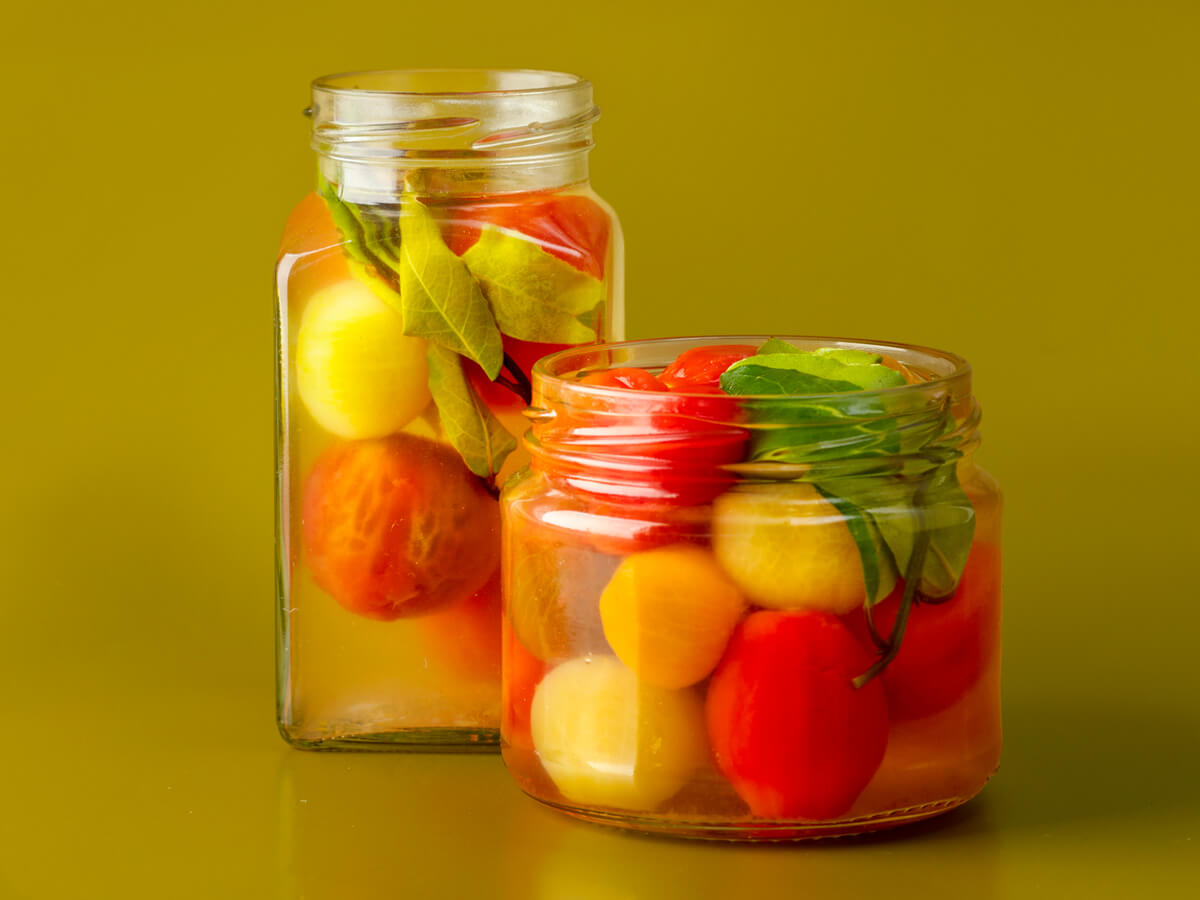
Ingredients
Apple cider vinegar
Water
1 Tbsp sugar
2 bay leaves
Salt
2 punnets cherry tomatoes
Airtight jar
Directions
Prepare the pickle liquid first. Roughly measure the liquid to the capacity of your jar, using the ratio of one-third vinegar to two-thirds water. Pour into a pot, along with sugar, bay leaves and salt to taste (two decent pinches). Heat and stir to dissolve the salt and sugar, then allow the liquid to cool while you prepare the tomatoes.
Bring a pot of water up to the boil and prepare a bowl of icy water nearby. Drop your cherry tomatoes into the boiling water. Watch them; this won’t take long. As soon as you see the skins start to split, remove them and plop them into the cold water. The drastic change in temperature will shock them and make it easier to remove the skins. Peel the tomatoes carefully and place them in your jar.
Check your liquid is quite cool. If it’s too hot, the tomatoes will cook and, without their skins to hold them together, turn into mush. Add the bay leaves to the jar, then pour liquid over to cover. Put the lid on tightly and leave them to sit for a day or so.
Ed Verner’s preserved lemon juice
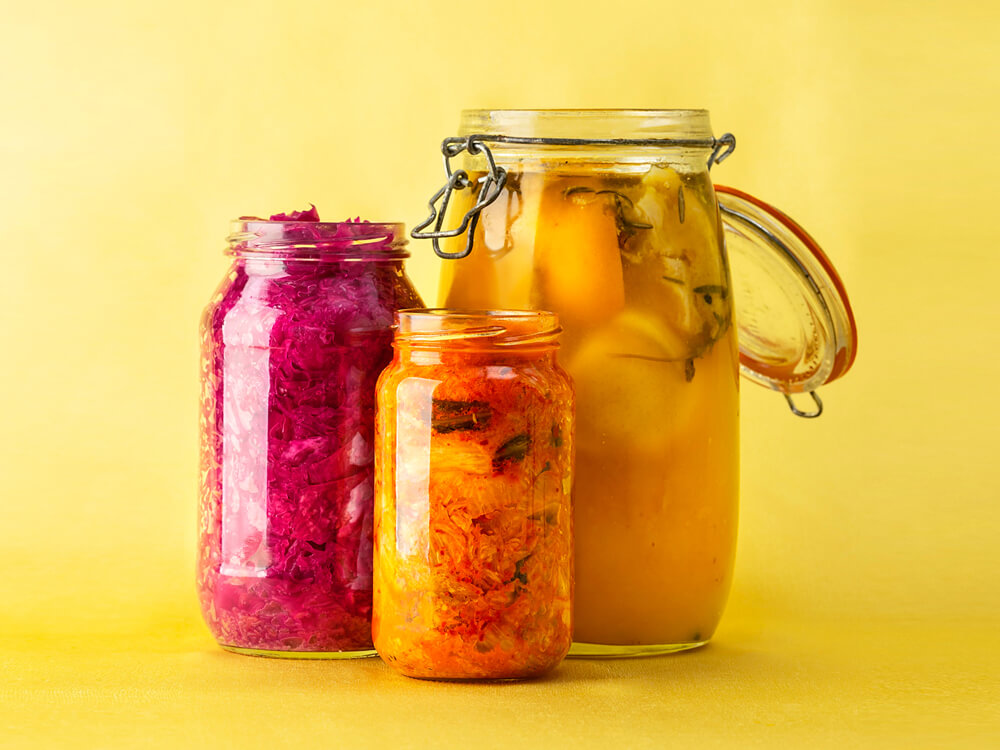
This is something very simple that gets used a lot in our kitchen; we reach for it as much as salt or cooking fat. Ideally, make this with Meyer lemons at the height of the season.
Directions
Squeeze the lemons and pour the juice into a preserving jar. Peel the rind off the lemons and add them to the jar. Calculate the weight of the contents and add 2% of that weight in salt.
Seal jar tightly, and leave at room temperature for 2-3 months.
Use preserved lemon juice in any instance when you’d normally want to add lemon juice. It’ll give a different edge to whatever it’s added to — fermenty and a little bitter.
This piece originally appeared in the January-February 2020 issue of Metro magazine, with the headline ‘Zing and bite’.
Follow Metro on Twitter, Facebook, Instagram and sign up to our weekly email

